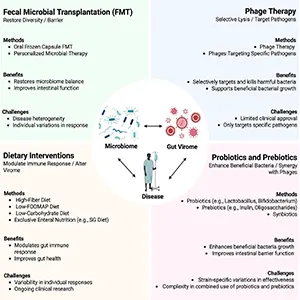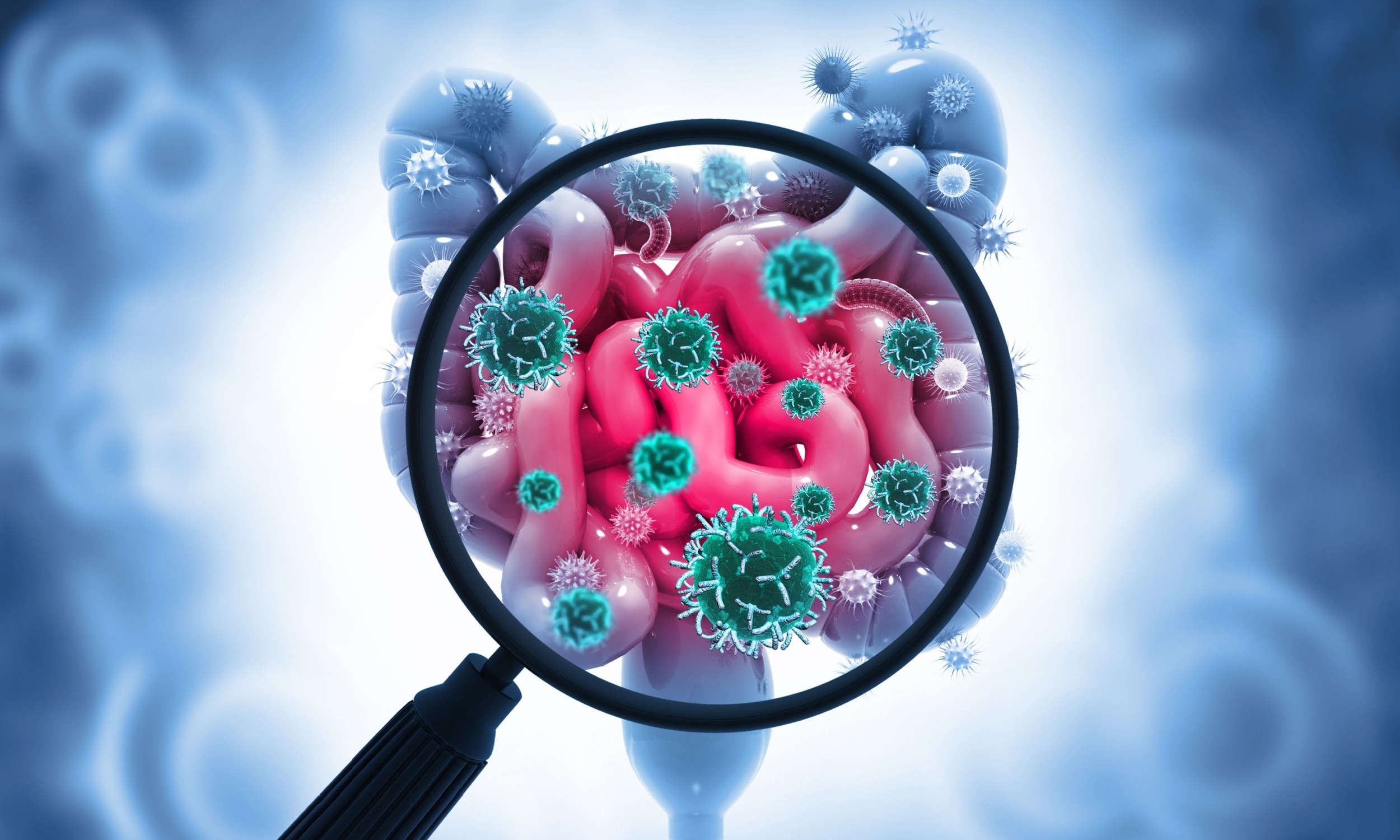For years, bacteria dominated gut health research. Now, the gut virome is gaining attention as a major player in health and disease. Bacteriophages, which are viruses that infect bacteria, make up around 90% of the gut virome.
Though small in biomass, they outnumber bacteria by up to tenfold. These tiny viruses shape microbial communities, influence immunity, and affect gut health.
A landmark review published recently in Precision Clinical Medicine reveals how the gut virome links to diseases like inflammatory bowel disease (IBD), colorectal cancer, and Clostridium difficile infection (CDI).
Gut’s virome changes across life stages
The gut virome changes constantly throughout life. Infants show high diversity in gut bacteriophages (also called phages), which is shaped by birth method, diet, and antibiotic exposure.
As individuals grow, diet and hormones refine the virome. In adults, phages and bacteria form a stable, balanced community.
However, aging shifts this balance. Older adults show more lysogenic phages, which integrate into bacterial genomes and potentially alter metabolism and immune interactions.
Diet and environment shape the virome
Diet greatly influences the virome. High-fiber diets support beneficial phages by encouraging helpful bacteria. Western diets, rich in fat and sugar, promote harmful phages.
Urbanization reduces exposure to natural viruses. Studies show that rural diets which are rich in fiber boost gut virome diversity.
Host genetics and immunity also play roles. Genetic variants can affect viral detection and clearance. Immune defenses, like interferons and IgA, keep the virome balanced.
However, immune dysfunction can trigger viral imbalances, worsening conditions like HIV and gut inflammation.
Viruses and bacteria interacting
Viruses, including phages, along with bacteria and fungi form a complex and dynamic ecosystem in the gut. The components interact in positive and negative ways, thus affecting host metabolism, immune regulation and resistance to disease.
The gut virome plays a crucial regulatory role in these intricate interactions. Phages interact with bacteria through lytic, lysogenic, and budding cycles, which regulate bacterial populations and gene flow.
In a form of microbial arms race, the bacteria defend against phages using CRISPR systems and the phages evolve escape mechanisms.
Some phages even boost bacterial metabolism and biofilm formation, affecting disease risk. For instance, phages can transfer genes that enhance bacterial survival in acidic conditions.
Virome’s influence on immunity
The virome affects gut immunity deeply. Phages can anchor to gut mucus and form a protective barrier. They also shape our own T and B cell activity and regulate macrophages. In addition, viruses that infect eukaryotic cells affect immune pathways and maintain gut balance.

However, infections and antibiotics can disrupt this harmony and lead to inflammation. Phages can trigger TLR9 pathways, causing excessive immune responses such as those linked to IBD.
Virome’s role in disease
Imbalances in the gut virome have been linked to several gut diseases. In IBD, specific phages become abundant and worsen inflammation.
Certain groups of phages (such as Caudovirales) amplify immune responses, while norovirus and rotavirus can damage the gut lining. Viral imbalances are also common in IBS and CDI.
In colorectal cancer, phages and eukaryotic viruses like HPV and JC virus (polyomavirus) appear more often. They may promote tumor growth by altering bacterial communities and gene expression.
Studies suggest that some phages directly influence cancer risk by promoting biofilms and transferring harmful genes.
Virus-based treatments
Several therapies now explore the virome’s potential to treat certain diseases or conditions. Fecal microbiota transplantation (FMT) restores gut balance and reduces inflammation in IBD and CDI.
FMT works not only by shifting bacteria but also by transferring beneficial phages. Studies show that donor phages often align quickly with recipients and promote recovery.
Phage therapy, which uses viruses to kill specific bacteria, is another approach that is gaining traction. It can reduce harmful microbes while preserving beneficial ones.
Researchers have created phage cocktails that target specific gut pathogens like E. coli and Klebsiella pneumoniae, and this approach has had promising results in animal models.
Dietary strategies also reshape the virome. High-fiber diets boost beneficial phages and support bacterial diversity.
Whey protein has shown potential in managing Crohn’s disease by improving phage-bacteria interactions.
Other interventions, such as exclusive enteral nutrition and low-FODMAP diets, also show benefits in gut diseases.
Probiotics, prebiotics, and phages
Probiotics introduce beneficial bacteria, while prebiotics feed them. Combining them, known as symbiotics, shows promise for restoring and maintaining gut health.
Recent research suggests that adding phages can enhance these effects. Phage-based products, such as PreforPro, have already shown benefits in clinical trials.
These products can reduce populations of harmful bacteria and improve probiotic performance, thereby creating a more stable gut environment.
Using gut viruses to detect diseases early
The gut virome is now being studied as a diagnostic tool. Viral patterns are more stable than bacterial ones, making them reliable biomarkers.
Distinct virome signatures can predict IBD and colorectal cancer. Machine learning models already use virome data to detect these diseases early.
Virome profiling may also track treatment responses, such as FMT success in IBD and CDI.
Challenges and future prospects
Despite the excitement over potential new treatments, many hurdles remain. Current methods struggle to capture the full virome due to technical limits.
Many phages are still unculturable, and their roles remain unclear. Researchers are working to improve viral databases and develop targeted therapies. Once these gaps close, virome-based therapies could change how we treat gut diseases.
The study is published in the journal Precision Clinical Medicine.
—–
Like what you read? Subscribe to our newsletter for engaging articles, exclusive content, and the latest updates.
Check us out on EarthSnap, a free app brought to you by Eric Ralls and Earth.com.
—–
